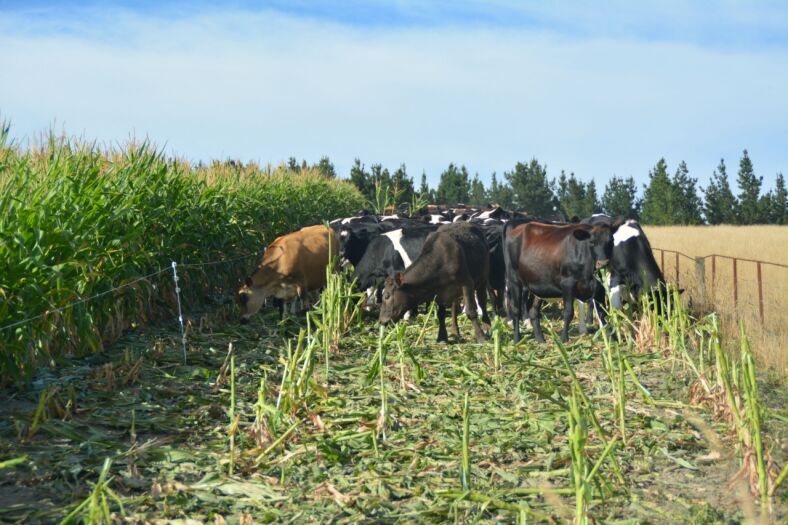
Articles
Should I greenfeed my maize crop?

Deciding whether to greenfeed a maize silage crop is not a simple decision because it can impact on feed costs as well as autumn and winter feed supplies.
Key factors to consider include:
- The cost of buying in feed
- Do you have enough silage to feed some now without compromising milk production or cow condition later in the season?
- Have you done everything you can to reduce feed demand?
- What is the development stage of the maize?
Under drought conditions, the aim is to milk as many cows as possible for as long as possible without compromising cow condition or pasture cover levels at calving time. So the important first step is to reduce the milking herd to the best producers. This means herd testing and drying off high SCC cows and low producers, looking at alternative feeds and grazing-off options for young stock and once a day milking.
Then consider your feeding options. With your herd trimmed down you need to find out if any extra feed is actually needed? The answer revolves around how much feed is being left behind after grazing. If you are consistently leaving behind fewer than seven clicks on the RPM then extra feed is probably needed.
Any crops such as brassicas or sorghum that were specifically grown for this situation should be fed first after testing for nitrate levels. Then assess the amount of stored feed on hand including pasture silage harvested over spring and early summer. If you have more than enough to last for the three weeks required between drought breaking rains and pasture cover levels recovering, then this excess may be fed out.
When stored feed levels are getting low, it is time to consider whether to greenfeed this year’s maize silage crop or buy-in feed. You need to do the sums to find out which of the two options is more cost-effective.
Several factors determine the cost of breakfeeding but the main one is the developmental stage of the maize. The younger the maize the more expensive it is to feed out; at six weeks before harvest the crop is only at 50% of its potential yield. At this stage the cost of greenfeeding maize is high. However, the closer it is to harvest time, the less yield potential you lose and the cheaper the feed becomes. Your Pioneer representative will be able to advise you on likely crop yield and its impact on feed price.
If the cost of buying in feed is less than breakfeeding, then it should be considered. However, price is not the only factor - the type of feed should be taken into account too. High energy feeds like maize grain will have a higher milk production potential than low quality feeds (e.g. average quality pasture silage).
If you choose to greenfeed your maize you should start with the area of the crop that is the poorest yielding. Ideally the maize should be harvested and fed to the cattle on a daily basis but, if you do not have your own harvester and a contractor is required, chopped material can usually be stored for up to 3 days. If the maize cannot be cut every three days then harvest enough maize silage to last 21 days and ensile it using a high quality silage inoculant.
Other options include breakfeeding the crop behind an electric fence or using existing topping equipment to chop it. If the plants have cobs be particularly careful as cows will eat these preferentially, increasing the risk of acidosis. Crops which are moisture stressed should be tested for nitrates prior to feeding.
For more information on greenfeeding maize silage contact your local Pioneer representative.
